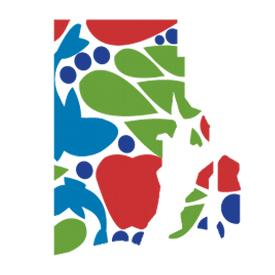
At a time when one in every nine Rhode Island households is experiencing food insecurity, about 80,000 tons of food is buried in the Central Landfill each year. According to the Natural Resources Defense Council, food waste is the number one component in our nation’s landfills, and costs American families $165 billion each year. Here are tools you can use at home to prevent food waste. Resource Recovery also offers free Food Waste Prevention workshops to RI groups.
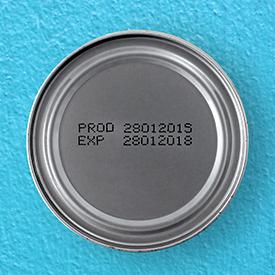
Get Smart
Did you know that the only food carrying an actual expiration date is infant formula? “Sell by,” “Best by,” “Use by,” etc., are terms the food industry uses to mean many different things, but none are related to food safety. Confusion over these dates results in billions of pounds of perfectly good food being thrown out in the U.S. Check out the short film Expired, and if you don’t think you waste that much food, try storing your would-be wasted food in a container in your fridge for a week or two. You’ll be surprised. So how do you know how long food will last? Read more on expiration dates and use search tools such as USDA's FoodKeeper app and StillTasty.com.
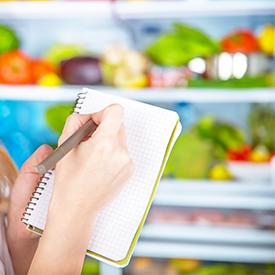
Smart Shopping
Keep a list of meals you enjoy, and make a shopping list with the week in mind. Be realistic and base it on how many meals you’ll eat at home. Check your kitchen first to avoid buying what you already have and include the quantity you need to avoid overbuying. You can download a list of free mobile apps and web tools below to make it easier.

Smart Storage
Did you know that fruits give off gases as they ripen that cause other produce to ripen? Did you know berries should only be washed right before you eat them? Did you know cilantro will last up to 10 days in a glass of water, in the fridge? Download a basic produce storage guide below, or check out this detailed A-Z guide. You can take your food storage to the next level by freezing, canning, and drying food properly, too. Find out more and/or sign up for a class through URI.
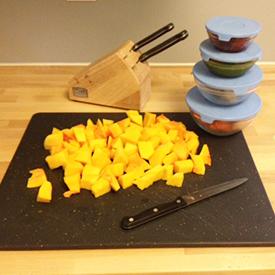
Smart Prep
Sure, you planned to make butternut squash risotto tonight, but you had a late night at school or work and that last thing you want to do is chop butternut squash. You order out. You never get around to making the risotto. Before you know it, your squash has gone bad. Sound familiar? Try this: When you get home from the market, wash, dry, chop, dice, slice, and store your fresh food items in clear containers. You’ll be more apt to whip up meals later in the week, saving time, effort, and money, overall. You’ll also be more likely to eat those healthy snacks if they are pre-prepped in bite size amounts.
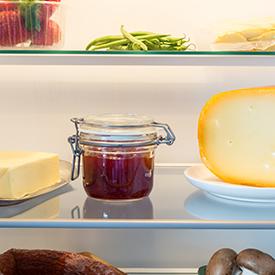
Smart Saving
Eat what you buy! Be mindful of old ingredients and leftovers. Put new food behind older food or move older food to a designated “eat me 1st” area in the fridge (download a template of labels you can print at home, below). You can then use websites that help you put leftover ingredients to use like Super Cook and Save The Food. This is especially helpful when creating your weekly shopping list. You can also plan for an “eat the leftovers” night each week.



